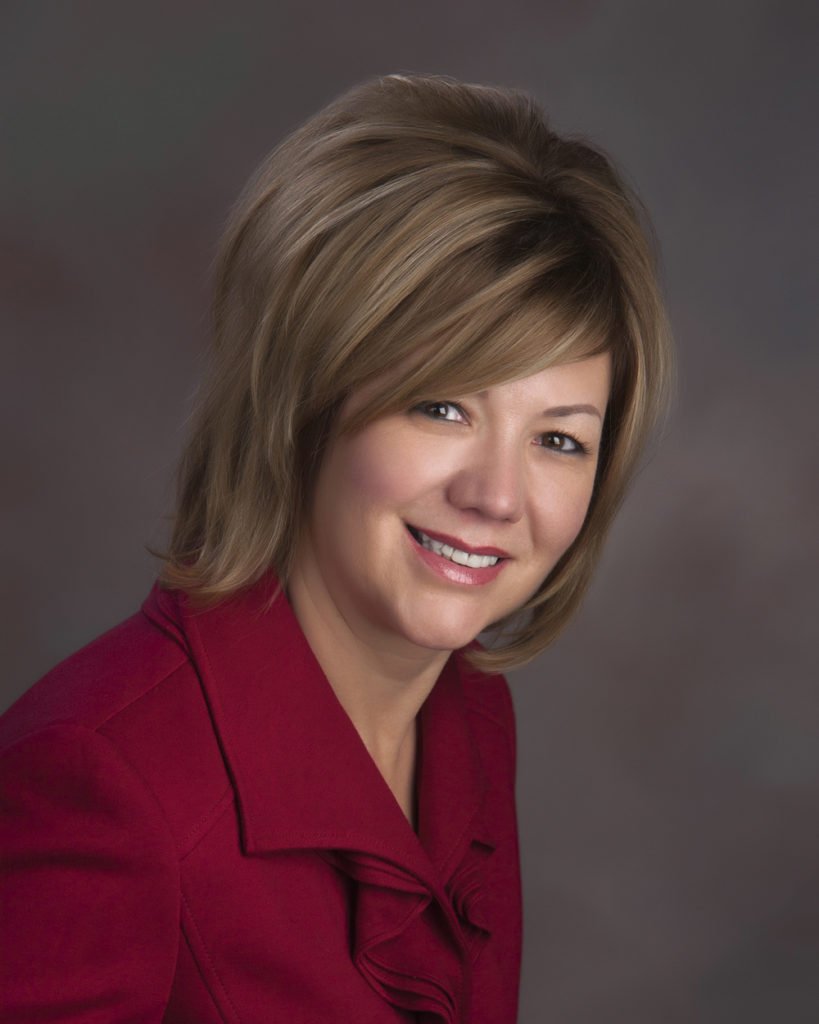Many advisors these days are focused on building and growing their businesses by going one stop beyond doing a better job of what they’ve always done. Many producers I know not only are constantly and consistently working on what they do well and trying to improve it, but they are also evaluating potential new facets of the business that may make sense for them and their clients. One such area of expansion for many advisors today is the wealth management area.
In recent interviews with Barbara Pietrangelo, CFP, CLU, ChFC, RFC, CLTC, LUTCF, of Prudential Financial in Ada, Mich. (shown at right), and Randy L. Scritchfield, CFP, LUTCF, president of the Montgomery Financial Group, Inc., in Damascus, Md., I explored wealth management and the opportunities for advisors. These two experienced advisors were kind enough to share their thoughts regarding their experiences with their own firms as well as what they see happening on a broader basis throughout wealth management.
Entering wealth management
I opened the conversation by asking how each of them entered the wealth management business. “My business is a financial planning model,” Pietrangelo said, “so we look at all aspects of the client’s situation to see how all the pieces fit together. Many clients don’t have an investment background or know how to turn assets into income. As clients are moving closer to retirement, wealth management is a critical piece.”
Scritchfield described his approach as an evolution. “Entering wealth management,” he said, “became a natural evolution of ‘growing with my clients.’ As my clients, who are mostly Baby Boomers, grew in their careers or businesses, they built assets that they needed me to help them with. It was just a function of providing my clients with what they needed, as I’ve always tried to do.”
Building credibility
As the advisor takes on a role that includes wealth management, credibility has to be crucial. I asked these two how they built the credibility that enabled them to expand their business approach. Scritchfield said, “I built credibility in two fundamental ways. One was the use of unique products and asset allocation strategies that withstood the challenge of different markets. And perhaps more importantly, when there were rough markets and bad news, I stayed in touch with my clients. This helped me both reinforce the trust they had already placed in me and helped me in that they started to bring to me both additional assets and referrals.”
For Pietrangelo, the issue of credibility is basic to her business. “Our business is about relationships and trust. Clients tell us their goals, dreams, and concerns. They understand that we are here to help them with the big picture. Wealth management is an important piece of this.”
Importance of designations
For many advisors in many different markets, there are questions regarding the importance of specific designations and courses of study. I asked about designations and education programs in the wealth management arena. “Professional designations are very important,” Pietrangelo told me. “I currently have six designations, and am working on a seventh. My CFP, CLU, and ChFC designations have all added to my credibility. It is also important to attend seminars and study groups to stay on top of this ever-changing business.”
For Scritchfield, the CFP designation was important as well. “Obtaining my CFP certification has been very helpful to me, and was especially so in the mid-1980s, giving me both the knowledge and confidence to better serve my clients.”
Set yourself apart
Good advisors tend to go where the money is, and that accounts for the high level of competition in the wealth management area. I asked these two advisors how, in light of the intense competition, they set themselves apart.
“We provide a personal touch,” Scritchfield said. “We are willing to spend more time with clients than some other advisors, often without regard to the account size.”
For Pietrangelo, service is the key to competing. “We feel we set ourselves apart by providing excellent service to our clients,” she said. “We meet regularly with clients so we can better understand their changing needs. We hold educational events for our clients. I truly believe it’s the little details that make a difference to clients.”
Working with a team
Many wealthy clients tend to have a “team” of advisors – like attorneys, accountants, etc. – to direct them, and I was curious about how these top-notch wealth managers handle that situation. Do they feel it’s important to be the manager or director of that team? And if so, how do they position themselves to take on that role?
Pietrangelo told me, “Often we are the catalyst for meeting with the other advisors. You have to earn the ‘lead’ position when dealing with other advisors. Clients and advisors know we are here to work as a team and to work for the client’s greatest good.”
Scritchfield sees it a little bit differently. “It is not necessarily ‘mandatory’ that I direct the team, but it’s mandatory that someone does. I convey that principle to my clients, which often, of course, leads to me becoming the ‘lead dog.’”
New thread: Key Challenges for Wealth Managers
Challenges and opportunities
Both of these advisors have a ton of experience in this market, so they know where the opportunities and challenges lie. When asked about the most significant challenges facing his practice, Scritchfield says it will be “to effectively retain the younger generations – my clients’ children – as the wealth transfers to them. I plan on addressing this by remaining technologically ‘state-of-the-art’ while maintaining our personal touch and adding younger generations to my staff who can relate well to my clients.”
On the opportunity side, Scritchfield said, “The opportunity to retain those assets and transition to the younger generations will continue to grow my practice to new heights, enabling me to continue to serve the clients at a high level.”
Pietrangelo was somewhat philosophical about the challenges and opportunities. “Ironically,” she told me, “the clients’ greatest challenges often present themselves as the greatest opportunities. I believe there are three key areas. The first is family. If one has done well, there can be family members who feel that the client is their personal bank. We try to keep the client financially healthy. We have seen people help so many others that eventually there is nothing left for them. With that said, families are also one of my best sources of referrals, and we have several families with which we work with three generations. We can do wonderful things with proper planning and help multiple generations.
“The next key area is health concerns. It’s expensive to get older! Again, financial planning can help address these issues and our industry has products to help solve some of these needs.
“The last key area is that we are living much longer than people expected or planned on living. We need to address withdrawal strategies with clients and reasonable expectations. Several years ago, more people wanted to retire early. Now, we are seeing our clients working longer in order to maximize Social Security benefits and because they realize that they have a much greater chance of being around for a very long time.
“Our services are very much needed. As we explain to our clients, it’s about setting goals, prioritizing, taking action, and reviewing regularly. I can’t stress enough how important these steps are, especially to update and review regularly.”
We concluded our discussion with an interesting take on how Scritchfield’s business developed, and how what he is doing now relates to the more traditional life insurance business from which he emerged. “One of the fundamental principles in caring for our clients in their wealth management is a ‘different take’ on how we started our practices in life insurance,” he told me. “With life insurance, we helped our clients be properly prepared for dying too soon. Comprehensive wealth management should be about protecting our clients against living too long. We must make sure that their money – or at least, income – does not die before they do.”
New thread: Key Challenges for Wealth Managers
Barbara Pietrangelo, CFP, CLU, ChFC, RFC, CLTC, LUTCF, has been happily with Prudential for 22 years. She is a member of the National Association of Insurance and Financial Advisors as well as the Million Dollar Round Table. She is the past president of the MDRT Foundation and currently serves on three charity boards.
Randy L. Scritchfield, CFP, LUTCF, is a 30-year Million Dollar Round Table member with seven Court of the Table and 13 Top of the Table honors. He has served on the MDRT Management Council five times, most recently as chair of Top of the Table in 2011-12. He has spoken extensively at industry events including the MDRT Annual Meetings and speaking tours in China, Mexico, and South America. He is president of Montgomery Financial Group in Damascus, Md.
Charles K. Hirsch, CLU, is contributing editor of Insurance Forums. He is also the president of Hirsch Communications Consulting, LLC, a communications consulting operation in Florissant, Mo. For many years, Chuck was the editor and publisher of Life Insurance Selling magazine and wrote the monthly column, What’s Going On in the Life Insurance Business. From 1999 to 2008, he was the publisher of several of the leading industry magazines in the life insurance, property/casualty insurance, and mortgage markets. These days, Chuck’s firm specializes in the development and execution of many kinds of communication strategies, particularly in the financial services business.













